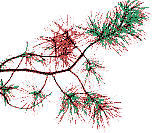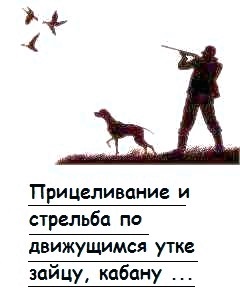Использование материалов сайта возможно при размещении активной ссылки
©2009 - 2025. Охота, рыбалка, природа - Информационный портал

ПОИСК ПО САЙТУ:


Полет и силуэты хищных птиц.
Хищных птиц легко различить по полету и силуэту. Рисунки силуэтов внизу.
Соколы при полете ритмично взмахивают крыльями, чередуя с планированием. Нападая на добычу, падают на нее сверху с полусложенными крыльями. С земли свою жертву не берут. У спокойно летящих соколов чеглока (общий вид на рисунке вверху) и сапсана, (рис. 16, а, б) хорошо заметны длинные остроконечные крылья и относительно короткий и узкоразвернутый клинообразный хвост.
У пустельги и копчика (рис. 16, в, г) хвост в полете несколько шире. Для этих соколов характерны при поиске добычи частые остановки в воздухе, парение на одном месте, сопровождаемое быстрыми взмахами крыльев. Эти птицы берут добычу с земли.
Ястребы (перепелятник и тетеревятник), (рис. 16, д,е) от соколов отличаются более быстрым взмахиванием крыльев и короткими периодами планирования. Летают обычно невысоко над землей. Жертву преследуют в угон и хватают ее в воздухе и на земле. У спркойно летящего ястреба короткие крылья и длинный, прямой, довольно широкий хвост.
У луней полет плавный, спокойный, взмахи крыльев редкие. Временами птицы парят в воздухе на месте. Выделяются длинные крылья и длинный широкий хвост (рис. 16, ж, з).
Коршуна (рис. 16, и) легко отличить в полете от всех равных с ним по величине хищников по длинным крыльям и длинному вильчатому хвосту, с заметной вырезкой.
Канюка (рис. 16,к) определяют в полете по длинным и широким крыльям и по широкому распущенному веером хвосту. Птицы часто парят в воздухе.
Осоед (рис. 16, л) по силуэту в полете несколько похож на сарыча. Отличается более узкими крыльями и прямым хвостом.
У скопы (рис. 16, м) еще более удлиненные крылья и при полете сильно выдается вперед и вниз голова.
Орлы (рис. 16, н) отличаются крупными размерами и широкими крыльями квадратной формы, с растопыренными на концах маховыми перьями. С орлами охотятся на довольно крупных хищников, например волка (см. видео внизу).
Все вышеописанные особенности полета хищных птиц следует хорошо запомнить с тем, чтобы по ошибке вместо ястреба не пристрелить сокола.

Главная >> Охотничье-промысловые звери и птицы- >> Хищные птицы >> Хищные птицы в полете. Силуэты, охота
Рис. 16. Силуэты хищных птиц в полете:
а - чеглок, б - сапсан, в - пустельга, г - копчик, д - ястреб-перепелятник, е - ястреб-тетеревятник, ж-з - лунь болотный, и - коршун, к - канюк, или сарыч, л - осоед, м - скопа, н - орел
Полет орла (орлана белохвоста), силуэт:

См. также: Охота с хищными ловчими птицами

Новости охоты, рыбалки. Реклама

Охота с орлом на волка:

Flight and silhouettes of birds of prey.
Birds of prey are easily distinguished by their flight and silhouette. Drawings of silhouettes at the bottom.
Falcons, when flying, rhythmically flap their wings, alternating with planning. Attacking prey, they fall on top of it with half-folded wings. They don't take their victim from the ground. Calmly flying cheglok falcons (general view in the figure above) and peregrine falcons (Fig. 16, a, b) have long pointed wings and a relatively short and narrowly turned wedge-shaped tail.
The kestrel and coccyx (fig. 16, c, d) have a slightly wider tail in flight. These falcons are characterized by frequent stops in the air when searching for prey, hovering in one place, accompanied by rapid flapping of wings. These birds take prey from the ground.
Hawks (sparrowhawk and grouse), (Fig. 16, d, e) differ from falcons in faster flapping of wings and short planning periods. They usually fly low above the ground. The victim is pursued into hijacking and grabbed in the air and on the ground. A fast-flying hawk has short wings and a long, straight, rather wide tail.
The flight of the harriers is smooth, calm, the flapping of the wings is rare. At times, birds hover in the air on the spot. There are long wings and a long wide tail (fig. 16, w, w).
The kite (Fig. 16, and) is easily distinguished in flight from all predators equal to it in size by its long wings and long forked tail, with a noticeable notch.
The buzzard (fig. 16, k) is determined in flight by its long and wide wings and by its wide fan-spread tail. Birds often hover in the air.
The wasp (fig. 16, l) is somewhat similar in silhouette to a buzzard in flight. It is distinguished by narrower wings and a straight tail.
The osprey (fig. 16, m) has even more elongated wings and its head protrudes strongly forward and downwards when flying.
Eagles (fig. 16, h) are distinguished by their large size and wide square-shaped wings, with flight feathers spread out at the ends. With eagles, they hunt quite large predators, such as a wolf (see the video below).
All the above-described features of the flight of birds of prey should be well remembered in order not to shoot a falcon by mistake instead of a hawk.
